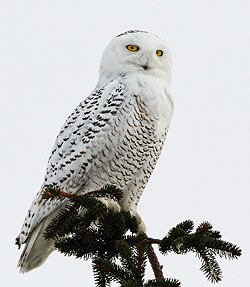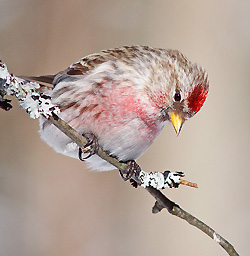 By Staff
By Staff
January 21, 2015
BURLINGTON, ON
Adults understand the relationship between nature and the environment – well some of them do. But how do you get that connection across to the pre-teens and the teenagers in the house?

Snowy Owls are expected to show up in even higher numbers than last year.
Young people have a connection with nature – they will stop and watch a hawk swoop in and grab a smaller animal from the ground. The will even marvel at an owl as it swoops from the top of a telephone pole to clutch a mouse scurrying through a field.
How do you get them to dig a little deeper and come away with an understanding that was based on an experience they had?
Bird Studies Canada does what they call for the Great Backyard Bird Count (GBBC). The 18th annual count is taking place February 13 through 16.
Anyone in the world can count birds at any location for at least 15 minutes on one or more days of the count and enter their sightings at www.BirdCount.org.
The information gathered by tens of thousands of volunteers helps track changes in bird populations on a massive scale.
 The GBBC is a joint project of the Cornell Lab of Ornithology and the National Audubon Society with partner Bird Studies Canada.
The GBBC is a joint project of the Cornell Lab of Ornithology and the National Audubon Society with partner Bird Studies Canada.
Bird watchers fell in love with the magnificent Snowy Owl during the last count when the birds were reported in unprecedented numbers across southeastern Canada, the Great Lakes states, the Northeast, and down the Atlantic Coast. Expect Snowy Owls to show up in higher numbers during this year’s GBBC, too.
“It’s called an ‘echo flight,'” explains Marshall Iliff, eBird Project Leader at the Cornell Lab of Ornithology. “After a huge irruption like we had last winter, the following year often yields higher-than-usual numbers as well. The abundance of lemmings that produced last year’s Snowy Owl irruption likely continued or emerged in new areas of eastern Canada, more owls may have stayed east after last year’s irruption, and some of last year’s birds that came south are returning.”
 “This may also be a big year for finches,” notes Audubon Chief Scientist Gary Langham. “GBBC participants in North America should be on the lookout for larger numbers of Pine Siskins and redpolls. These birds also push farther south when pine cone seed crops fail in the far north of Canada.”
“This may also be a big year for finches,” notes Audubon Chief Scientist Gary Langham. “GBBC participants in North America should be on the lookout for larger numbers of Pine Siskins and redpolls. These birds also push farther south when pine cone seed crops fail in the far north of Canada.”
Bird watchers from 135 countries participated in the 2014 count, documenting nearly 4,300 species on more than 144,000 bird checklists–that’s about 43% of all the bird species in the world! In addition to the U.S. and Canada, India, Australia, and Mexico led the way with the greatest number of checklists submitted.

Common Redpole
“We especially want to encourage people to share their love of birds and bird watching with someone new this year,” says Dick Cannings at Bird Studies Canada. “Take your sweetheart, a child, a neighbor, or a coworker with you while you count birds for the GBBC. Share your passion and you may develop a brand new bird watcher!”
The Great Backyard Bird Count is a great way for people of all ages and backgrounds to connect with nature and show some love for the birds this Valentine’s Day.
Participation is free and easy. To learn more about how to join the count, download instructions, a slide show, web buttons, and other materials, visit this website: While you’re there, get inspired by the winning photos from the 2014 GBBC photo contest.



















great article